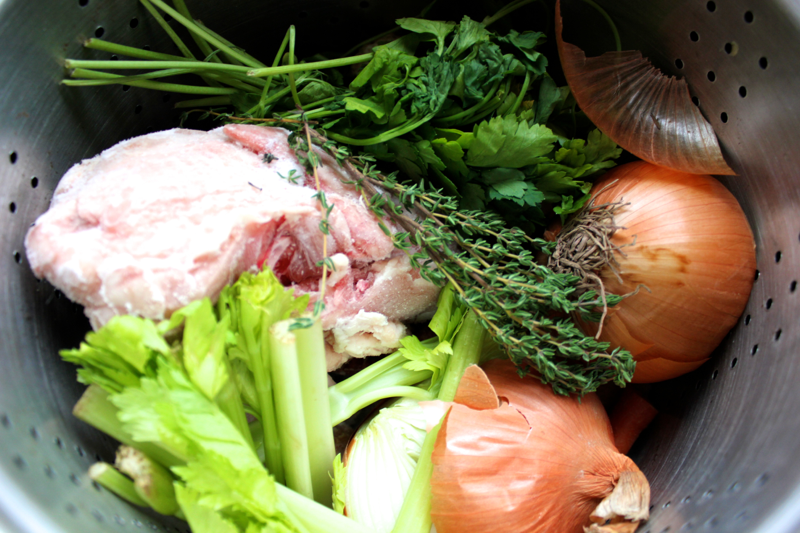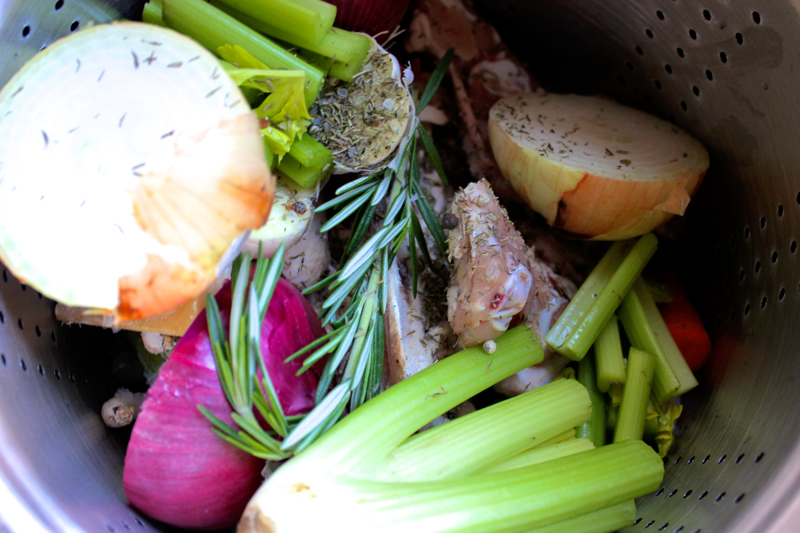
If you don’t routinely make chicken stock, you should think about picking up the habit. Chicken stock is an essential component of so many recipes, but so many packaged chicken stocks have a strange flavor that shows up in any recipe they go into. When you make your own chicken stock, you can control the ingredients that go into it and impact its final, ideally neutral, flavor. Making chicken stock is also a great way to minimize waste. Every time I have vegetable trimmings, parmesan cheese rinds, and (obviously) chicken parts that will go unused, I toss them into a plastic bag in my freezer. When the bags are full and my chicken stock stores are low, I let a new batch simmer away. The chicken stock then gets frozen in smaller portions so it is always on hand when it’s needed.

The vegetables you choose for the chicken stock should be relatively neutrally flavored- onions, carrots, celery, garlic, and mushroom stems are all ideal candidates. Things like beets and other strongly flavored additions should be avoided. Whenever I make spatchcocked chickens, I save the chicken backs. Whenever I make wings, I save the wing tips. Whenever I butcher a whole chicken, I save the carcass. Raw chickens work best because they still have the maximum amount of collagen, but you could add in a cooked carcass too. Stems from herbs are also welcome in chicken stock, as are any whole herbs that you need to use up. Otherwise, dried herbs like rosemary, thyme, and bay leaves work well and add flavor.

Making the stock is also pretty hands-off. Get a really large pot, put in the chicken, followed by the vegetables and herbs. Fill the pot with water so that the ingredients are just covered, and then bring the water to a boil. Once the water boils, reduce it to a simmer, and let the stock cook for about 3 hours. If the stock boils too rapidly, there is a risk that the chicken fat will emulsify into the liquid and ruin the stock, so make sure the simmer is gentle. After the 3 hours are up, strain out the solids and discard them. Cool the chicken stock before putting it in the refrigerator or freezer to avoid stressing out the fridge with so much warmth. I like to cool my stock by filling my sink with ice cubes and ice packs, and putting the whole pot in there to chill off. Once the chicken stock has cooled down, you can either skim off the fat, use a fat separator (my preferred method), or put the stock in the fridge and remove the fat once it solidifies. Transfer the stock into freezer bags or small containers, and freeze them until they are needed.
Bonus: stock simmering on the stovetop smells like happiness and peace 🙂
Shopping list:
- Chicken
- Vegetables
- Herbs

This is so true! I do the same as you do and keep a bag in the freezer to which I add carrot, onion and celery ends, plus chicken bones. It’s essentially free and tastes so much better than what you can buy. I love the smell of it simmering, too. I tend to salt mine a lot less than storebought.